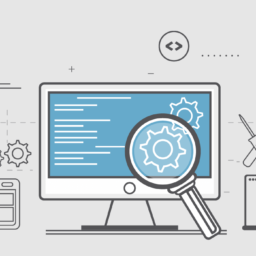The continuous and rapid demands of the software and software releases in the market have affected the software quality to a great extent. A lot of companies have started facing a lot of bugs and defects in the software, which they have to report and then wait to get fixed. While this might seem like a small issue to you, it can bring down a company by making it lose more than a few million dollars in just a few days. This thought scared a lot of companies and instead of heading towards software testing companies or asking the developers to fix the issues, they have turned towards using defect tracking software.
A lot of companies have invested in the defect tracking software hoping that they will make things easier for them. However, on the contrary, things did not go as planned for a few companies. These companies had to face a lot of challenges and they turned back to the software testing companies once again. Now, you must be thinking about the reasons for this. You must be wondering if the software designed for defect tracking worked wonders for a lot of companies, why it did not work for a few others. Well, there are reasons for that and the biggest reason is people not taking their drawbacks into consideration.
The majority of the people are not even aware of the fact that there are a lot of drawbacks to the software used for defect tracking as well. If you are one of those people, we would like to help you in getting knowledge about them. Here is the list of the drawbacks reported by the majority of the companies:
Setting the Priority
When it comes to using tools for defect tracking, a lot of companies believe it is good to have as many tools as possible. They believe it will help them remove all bugs present in the code. However, the reality is a bit different. Since every defect tracking software is designed differently, when you use multiple software you end up with the same bugs identified with separate descriptions. This instead of helping the team becomes yet another overhead.
Hierarchy Issues
Bugs need to be identified and then set in line according to the severity levels. A lot of defect tracking software have failed to guess the right severity levels of the bugs. They put a high priority on the bugs that are low priority and vice versa. This messes up the whole work-plan as the testers end up spending more time on the bugs that need little fixing leaving less time for the complex issues. This directly affects the performance of the company as well.
Minimal Communication
Usually, for the testing phase, developers like to stay in touch with the testers to understand all the bugs caught, check their level of severity, and decide the final plan for fixing every bug. However, with a defect tracking tool in between, communication becomes minimal. Developers share the project with testers and let them know through the software. Similarly, testers identify issues and let the developers know about them through the software leaving zero space for communication. This can become a huge issue in the end as both of the teams can be on different pages throughout the process.
No Defined Length of Descriptions
At the end of every testing activity, the tracking tools used are supposed to give a testing report including the list of bugs along with their descriptions, ways to experience them, and some suggestions on solving them. Every software is designed with a different defined length of the bug descriptions. There are software that provide descriptions in one or two lines whereas some software are designed to provide at least a paragraph long detail of the identified bugs. This confuses the testers and developers as at times it is hard to understand the issue with two lines and other times, the team does not have the energy to read long details to grab the idea.
Conclusion
There is nothing like perfection in anything so the tools designed to bug tracking are not perfect as well. Since every business has different demands and needs, one software can never fit all the requirements and can never please all of its customers. So it is super important for businesses to do good research before they sign up for any of the software. Also, even with software by your side, there will be times you will have to do extra effort so be prepared for that.

